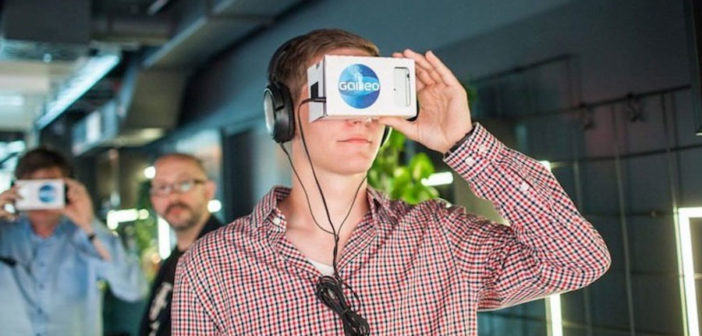As we go hurtling to the new and shiny things on the block (namely virtual reality and augmented reality), perhaps now would be a good time to take a step back and look at potential consequences of these technologies going mainstream and where advertising could come into play.
As with digital advertising, which, at the outset, claimed it would be the Holy Grail to marketers where everything worked seamlessly, sales would rise exponentially and everything would be measurable – well, as we all know, it hasn’t quite turned out like that – yet.
No one thought of the impacts it would have on the end user and everyone got a little bit greedy. So inevitably, people fought back with tools available to them, ad blocking as an example. We now have a situation where there are two types of web: blocked and unblocked – but that’s another blog altogether.
So what’s to stop the same thing happening with AR or VR? Those of you who have read the recent piece by my colleague, David Ellison, will understand the difference between the two. I’m specifically talking about VR whereby you put the goggles on and immediately you are transported to another environment – it all sounds great.
As someone who has experience in the gaming environment Andrew Wilson, chief executive of the EMEA arm of games studio Electronic Arts, believes are three things necessary for it (like any new technology) to succeed: innovative mechanics, a low barrier to entry, and a profound user experience.
The question here is how do advertisers fit in and how do they avoid making the same mistakes as in the digital environment.
It all comes down to ethics or as I like to call them rules – remember rules control the fun.
Looking at this very generally, the effects on human behaviour are fascinating and a little scary to some extent. Because of the immersive environment the user is in, will the lines become blurred between real-life and virtual? In a thoughtful piece by Andrew Da Silva – head of travel team (T3) at Mediacom in Australia, he discusses five points that I found particularly poignant.
The first point reflects on the premise that VR will become part of our memory, without discriminating between good or bad things, depending on the environment the user has put themselves in. It seems a fair concluson I suppose the idea here would be for the advertiser to only be associated with good experiences.
The next is what if people become sick or injured, after being immersed both physically and even mentally. Will the creators have to put warnings on these experiences much like those on cigarette packets? At present the adult certifcations on games or films aren’t really much of a deterrent to younger gamers.
This brings me onto the third point, violent virtual reality games – these are already available as 2D in titles such as Call of Duty, where there is training, battle and even death – how do we, as suggested in the article, maintain a grip on reality? This could spawn a whole new market in reality drugs designed to bring us out of the virtual state.
The fourth is virtual crime which is also mentioned and is certainly possible, but I’ll take it a stage further. If a user is killed in a war game or car crash, (think Grand Theft Auto) and suffers post-traumatic stress due to the immersive experience, what would the consequences be?
As we seem to live in a blame culture society, the question from the user could be who can I sue? The game’s developer , the person(s) who killed me or the console manufacturer?
By VR going mainstream like smartphones (we already have smartphone addiction), the user may have to be medically treated, and this could put an incredible strain on our health service as doctors and nurses would have to be trained specifically to treat patients who suffer from VR inflicted illnesses.
And finally should there be a code of ethics at all? My thinking would be probably yes, there should be, otherwise havoc could be caused in all sorts of ways (some of which I haven’t covered or even thought about) and the virtual world becomes the real Wild West. We are only just recovering from the Wild West in digital.
Where will advertising fit in? For now it may be just product/prop placement and sponsorship along with some content woven in, which at present seems a little weak and very niche. Perhaps more and more partnerships will be formed with games/experience makers and brands – you never know, media may also be sold inside a game or experience as a way to advertise.
And just to leave you with a final thought from the rather cynical part of my mind, who would want to spend so much time in a virtual world anyway? Either you’re running away from god knows what, or you have nothing to live for in the real world.
This article first appeared in www.thedrum.com
Seeking to build and grow your brand using the force of consumer insight, strategic foresight, creative disruption and technology prowess? Talk to us at +9714 3867728 or mail: info@groupisd.com or visit www.groupisd.com

